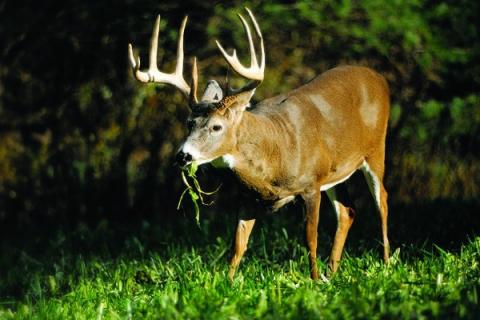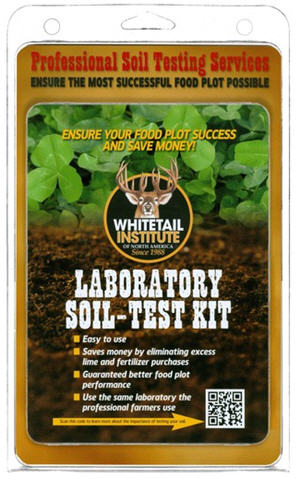
There are several important steps you can take now that will allow you to quickly plant your food plots this spring. Neglect them and you’ll be playing catch-up from the start.
Diagnose Your Dirt
The single most important thing you can do to make your spring planting a success is to conduct a soil test.
“No other step offers greater potential to ensure optimum results than testing your soil through a qualified laboratory,” says Jon Cooner, of the Whitetail Institute of North America. “It’s simple, inexpensive, and provides information that’s vital to food plot success.”
The Whitetail Institute sells soil test kits, or you can have tests done through local farm co-ops. Use a clean bucket to gather samples from several areas. This will make sure you get a representative reading. Also let the lab know what species of plants you’ll be putting in. They will then recommend specific amounts of nitrogen, potassium and phosphorous, as well as other elements such as zinc, manganese, magnesium and boron.
Having the right fertilizer applied ensures that the plants you put in will be able to absorb the nutrients and minerals in the soil and transfer those to the deer that eat them. That, in turn, means healthier does and heavier-racked bucks.
Add a Hint of Lime
Now is the perfect time to add lime to your fields and plots since it takes time for it to work down into the soil, where it can reduce the acidity. Local farm co-ops can apply it or you can buy bags and apply it with a spreader.
Do Some Spring Cleaning
Before planting I like to devote some time to rock and branch removal. Winter winds usually knock down tree branches that can damage tractor implements. Freezing and thawing ground often brings rocks up the surface that need to be removed. Gather them now, before they dull or break your tiller’s blades.
Plant Security Shrubs
If your plots are in open areas, now is a good time to plant some shrubs leading to them from the nearest cover and along the edges. Shrubs will provide security for mature bucks, making them feel comfortable feeding in the plot during daylight hours. Good varieties include indigo bush, lespedeza, Chickasaw plum, raspberry, and dogwood.
Seed with Frost
For those living in northern states, you can actually do some planting now with the frost seeding technique. Spread seed in plots that were thin or others that you prepared for planting last fall. The thawing and freezing action of the soil will work the seed in just enough that it will sprout once warmer weather comes, with no tilling required.
A little hard work now can pay huge dividends later in the season. You’ll thank yourself when that bruiser buck walks right under your stand this fall. So let’s get busy! Spring will be here before you know it.
- 4706 views

